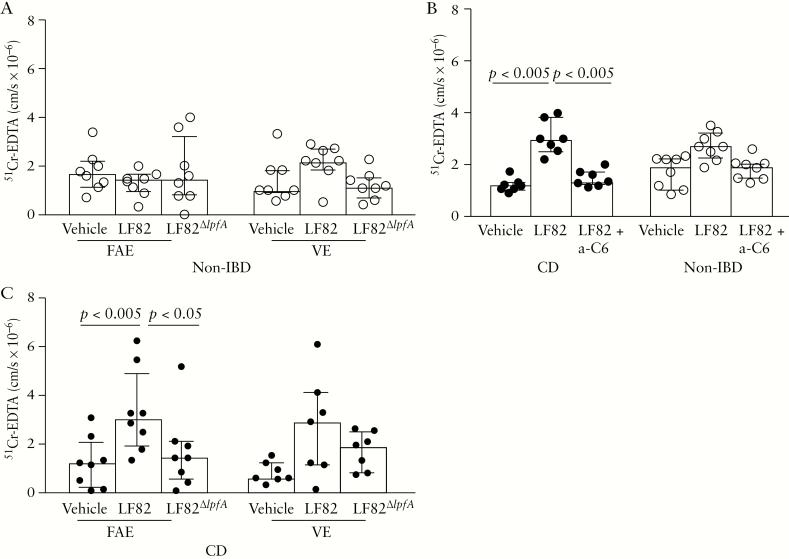Figure 5.
Effects of E. coli LF82, LF82∆lpfA, the mutant strain with the long polar fimbriae [LPF] gene deleted, and pre-incubation with anti-CEACAM6 [a-C6] on 51Cr-EDTA permeability in the follicle-associated epithelium [FAE] and villus epithelium [VE] of patients with Crohn’s disease [CD] and of non-inflammatory bowel disease [IBD] controls. Segments of FAE and VE were obtained from ileum of the same individual and run in parallel in the Ussing chambers [two replicates/segment and treatment]. [A–B] Effects on 51Cr-EDTA permeability by LF82 and LF82∆lpfA in patients with CD and non-IBD controls. When comparing the permeability in patients with CD with that in controls, it was revealed that the effect of LF82 on 51Cr-EDTA permeability was higher in patients with CD in both the VE [p < 0.005] and the FAE [p < 0.05]. The same pattern was seen for LF82∆lpfA, both in the VE [p < 0.05] and in the FAE [p < 0.005]. [C] Effects of LF82 on 51Cr-EDTA permeability with and without pre-incubation with a-C6. Bars represents the median [25th–75th percentiles], and comparisons between the two groups were made using the Mann–Whitney U test. Vehicle corresponds to chambers to which 51Cr-EDTA and Krebs buffer only were added. One circle represents one individual.

